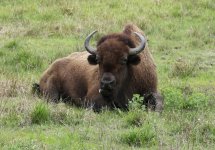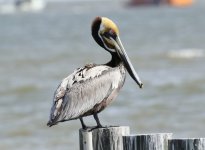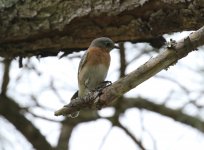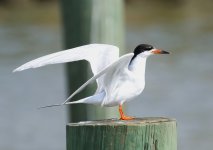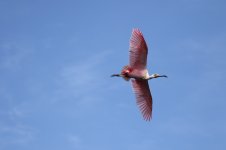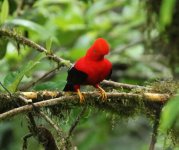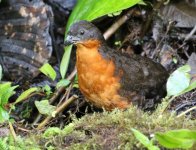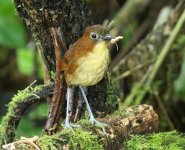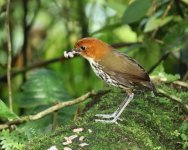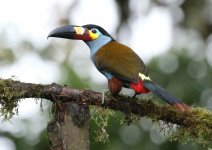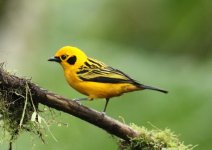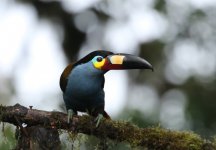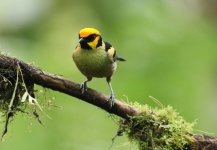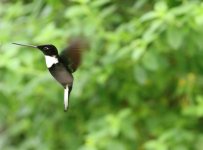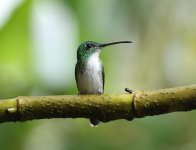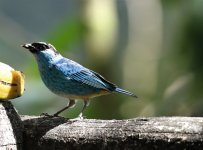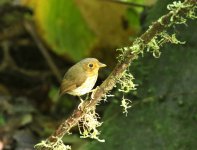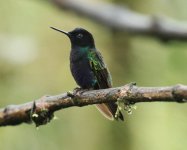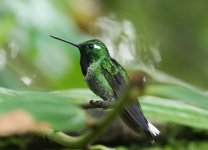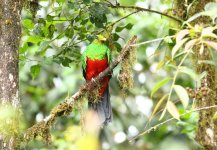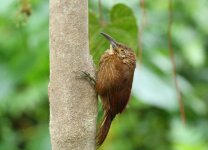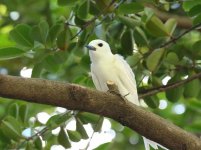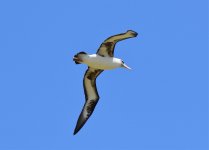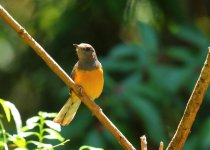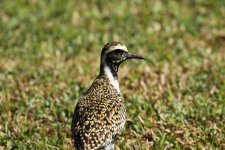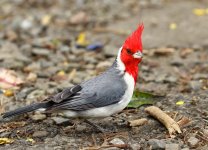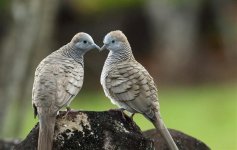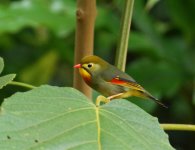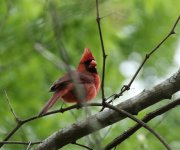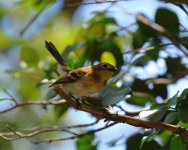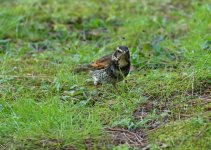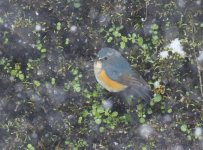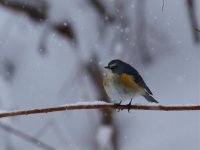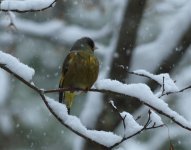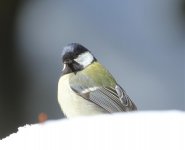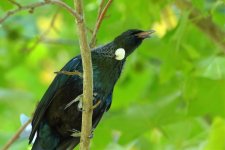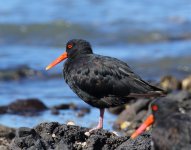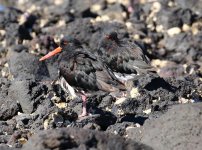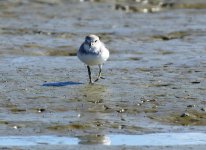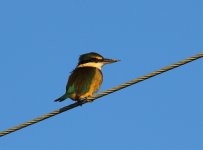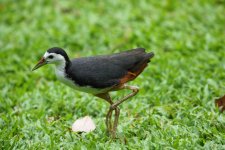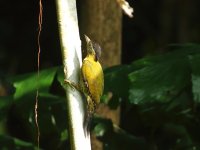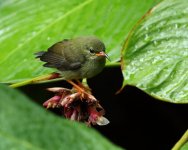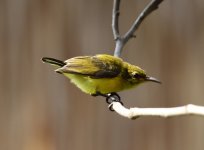We have just started this "Around the World in 60 days trip"
I'll post at the end of each leg if there is birding involved.
----------------------------
I had long held ambitions to do a Round-the World trip.
After much studying of the Star Alliance RTW tool on their website I had a plan that started with a flight from Manchester on Singapore Airlines to Houston, Texas; and then zigzagged in a largely westerly direction, (you are are allowed certain detours within a continental block) taking in Ecuador, Panama, Los Angeles, Hawaii, Japan, New Zealand, Singapore, Bali, Thailand, Myramar and Belgium before touching back down in Manchester.
The locations were a mix of new, some old favorites and the convenient. The trip wasn’t about bird or wildlife watching but being us we had a arranged a few stops to hopefully see some good species along the way.
We couldn’t really carry all the field guides around so I used the Audubon app for the US, Merlin for Panama and Hawaii, and copied the plates from my Ecuador, Japan, New Zealand and Indonesia guides and just took the concise Robson - South East Asia guide for the three countries it covers.
Rather than a day by day report – I’ll cover the locations we birded on the stops that had some wildlife element.
Houston
I had been to Texas on business a couple of times but Sarah had never been.
We decided to base ourselves in Clear Lake which is good for a few birding sites and very close to Houston Space Centre.
We birded Arnand Bayou, Anahuac Wildlife Refuge, High Island and Texas City Dike. Migration hadn’t really got going yet (we arrived on 15th March).
Armand Bayou we spend the best part of a day here – birding highlights were: Red-bellied Woodpecker, Northern Parula, Black and White warbler, White-throated Sparrow, Purple Martin, Red-winged Blackbird, Northern Cardinal and Great Blue Heron but we did really well with other wildlife getting sightings of a Bobcat, White-tailed Deer, Fox’s Squirrel, American Alligator and Green Anole. We also heard a Tropical Parula and missed a flock of Cedar Waxwings despite walking the flooded Ladybird trail where they had been seen earlier, we did get a quick flight view of three but not great; fortunately on return to our hotel I heard them out the window and managed to get Sarah on a group of around 100, we managed to see these birds feeding each day in the grounds of the hotel.
Anahuac Wildlife Refuge - nothing much at visitor centre only things worth mentioning were distant Eastern Bluebird, Blue Jay and American Goldfinch. In the reserve proper; a good 20 minute drive away; we did a bit of walking, drove the Shoveler’s Loop and did the boardwalk and woods.
Worth a mention were White-tailed Kite, Blue-winged Teal, Roseate Spoonbill, Fulvous Whistling Duck, Long-billed Dowitcher, Pied-billed Grebe, Tri-coloured Heron, Osprey, Least Sandpiper, Greater Yellowlegs, Wilson’s Snipe, Pectoral Sandpiper a very confiding Eastern Meadowlark and a flyover Bald Eagle.
We also saw all three Grackles and hundreds of Red-winged Blackbirds.
In the ditch was a close up Alligator and a skulky Common Yellowthroat.
We then went to High Island (mainly spent at the rookery at Smith Oaks), great photo opportunities of Egrets, Spoonbills and Cormorants but only new migrant in the woods among dozens of Yellow-rumped Warblers was a Blue-headed Vireo.
Houston Space Centre
Unlike the space centre in Florida there wasn’t a lot of wildlife to see in the margins of our visit – I did manage to photograph an Eastern Bluebird but that was about it. Until back at the hotel when watching the Cedar Waxwings we added Ruby-crowned Kinglet and Blue-grey Gnatcatcher.
Texas City Dike
Texas City is famous as being the home of the first US Airforce, set up in 1913 but a volunteer at Anahuac told us that it was good for gulls and terns and there would be a few hundred Skimmers, so on our last day before handing back the car at the airport we decided to give it a look. It was a lovely relaxing place to visit and just watch American White and Brown Pelicans fish alongside the locals.
Terns were Royal, Caspian, Least, Forster’s and Sandwich Tern there were almost 400 Skimmers in a single flock and a few singles, we also had one Roseate Spoonbill.
Gulls were mainly Laughing but with a few Franklin, American Herring Gull, Mew Gull, Ring-billed and a single Bonaparte’s Gull.
In the little park with the Spirit of Texas statue we added Loggerhead Shrike and Marsh Wren.
Drive to the airport was uneventful and we got our evening flight to Quito.
I'll post at the end of each leg if there is birding involved.
----------------------------
I had long held ambitions to do a Round-the World trip.
After much studying of the Star Alliance RTW tool on their website I had a plan that started with a flight from Manchester on Singapore Airlines to Houston, Texas; and then zigzagged in a largely westerly direction, (you are are allowed certain detours within a continental block) taking in Ecuador, Panama, Los Angeles, Hawaii, Japan, New Zealand, Singapore, Bali, Thailand, Myramar and Belgium before touching back down in Manchester.
The locations were a mix of new, some old favorites and the convenient. The trip wasn’t about bird or wildlife watching but being us we had a arranged a few stops to hopefully see some good species along the way.
We couldn’t really carry all the field guides around so I used the Audubon app for the US, Merlin for Panama and Hawaii, and copied the plates from my Ecuador, Japan, New Zealand and Indonesia guides and just took the concise Robson - South East Asia guide for the three countries it covers.
Rather than a day by day report – I’ll cover the locations we birded on the stops that had some wildlife element.
Houston
I had been to Texas on business a couple of times but Sarah had never been.
We decided to base ourselves in Clear Lake which is good for a few birding sites and very close to Houston Space Centre.
We birded Arnand Bayou, Anahuac Wildlife Refuge, High Island and Texas City Dike. Migration hadn’t really got going yet (we arrived on 15th March).
Armand Bayou we spend the best part of a day here – birding highlights were: Red-bellied Woodpecker, Northern Parula, Black and White warbler, White-throated Sparrow, Purple Martin, Red-winged Blackbird, Northern Cardinal and Great Blue Heron but we did really well with other wildlife getting sightings of a Bobcat, White-tailed Deer, Fox’s Squirrel, American Alligator and Green Anole. We also heard a Tropical Parula and missed a flock of Cedar Waxwings despite walking the flooded Ladybird trail where they had been seen earlier, we did get a quick flight view of three but not great; fortunately on return to our hotel I heard them out the window and managed to get Sarah on a group of around 100, we managed to see these birds feeding each day in the grounds of the hotel.
Anahuac Wildlife Refuge - nothing much at visitor centre only things worth mentioning were distant Eastern Bluebird, Blue Jay and American Goldfinch. In the reserve proper; a good 20 minute drive away; we did a bit of walking, drove the Shoveler’s Loop and did the boardwalk and woods.
Worth a mention were White-tailed Kite, Blue-winged Teal, Roseate Spoonbill, Fulvous Whistling Duck, Long-billed Dowitcher, Pied-billed Grebe, Tri-coloured Heron, Osprey, Least Sandpiper, Greater Yellowlegs, Wilson’s Snipe, Pectoral Sandpiper a very confiding Eastern Meadowlark and a flyover Bald Eagle.
We also saw all three Grackles and hundreds of Red-winged Blackbirds.
In the ditch was a close up Alligator and a skulky Common Yellowthroat.
We then went to High Island (mainly spent at the rookery at Smith Oaks), great photo opportunities of Egrets, Spoonbills and Cormorants but only new migrant in the woods among dozens of Yellow-rumped Warblers was a Blue-headed Vireo.
Houston Space Centre
Unlike the space centre in Florida there wasn’t a lot of wildlife to see in the margins of our visit – I did manage to photograph an Eastern Bluebird but that was about it. Until back at the hotel when watching the Cedar Waxwings we added Ruby-crowned Kinglet and Blue-grey Gnatcatcher.
Texas City Dike
Texas City is famous as being the home of the first US Airforce, set up in 1913 but a volunteer at Anahuac told us that it was good for gulls and terns and there would be a few hundred Skimmers, so on our last day before handing back the car at the airport we decided to give it a look. It was a lovely relaxing place to visit and just watch American White and Brown Pelicans fish alongside the locals.
Terns were Royal, Caspian, Least, Forster’s and Sandwich Tern there were almost 400 Skimmers in a single flock and a few singles, we also had one Roseate Spoonbill.
Gulls were mainly Laughing but with a few Franklin, American Herring Gull, Mew Gull, Ring-billed and a single Bonaparte’s Gull.
In the little park with the Spirit of Texas statue we added Loggerhead Shrike and Marsh Wren.
Drive to the airport was uneventful and we got our evening flight to Quito.






